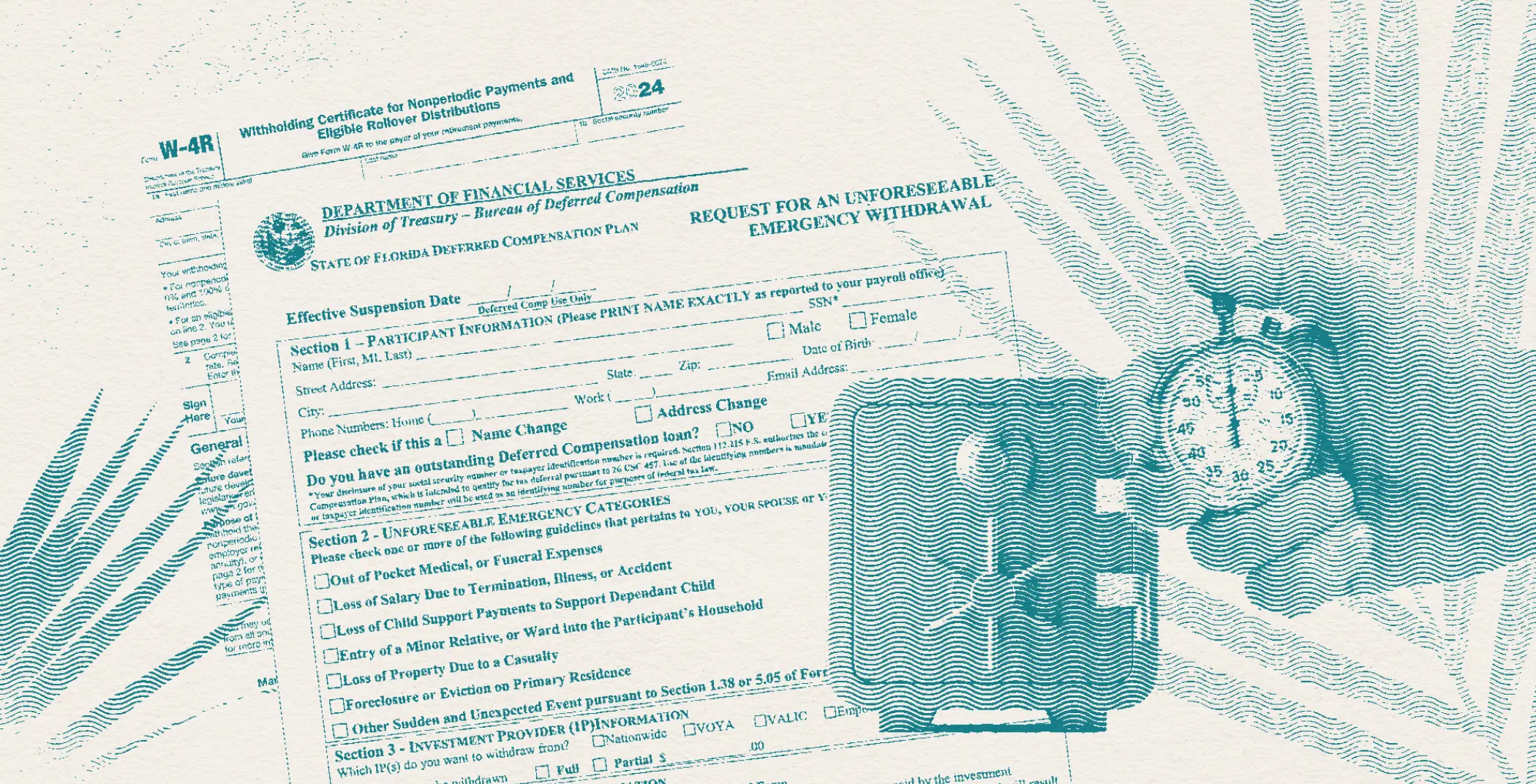The 457(b) plan is a powerful, tax-advantaged retirement savings option available to public employees, including first responders. It allows you to defer a portion of your salary into a retirement account where it can grow tax-deferred until withdrawal, offering an excellent way to supplement your pension and enhance your retirement security. In this guide, we’ll explore the key features, benefits, investment options, eligibility requirements, and strategies for maximizing your retirement savings through the 457(b) plan.
Key Features of 457(b) Plans
457(b) plans provides flexibility and tax efficiency in saving for retirement. They allow you to defer income, potentially lowering your current tax burden, and offers a variety of investment choices to align with your financial goals. The plan’s structure makes it especially beneficial for first responders who may retire earlier than other professionals, allowing access to funds without the early withdrawal penalties associated with other retirement plans.
Key Facts: 457(b) Plans
Tax-Deferred Contributions
A 457(b) plan allows you to defer a portion of your salary into the plan, where it grows tax-deferred until withdrawal. This reduces your taxable income during your working years, potentially lowering your tax burden.
Contributions Limits & Catch-Up Contributions
For 2024, the contribution limit for 457(b) plans is $23,000. If you are over 50, you can make an additional catch-up contribution of $7,500, bringing the total to $30,500. Additionally, the 457(b) plan offers a special catch-up provision that allows you to defer up to double the annual limit (up to $46,000) during the three years before your normal retirement age if you haven’t maxed out contributions in previous years. This can significantly boost your retirement savings in the critical years leading up to retirement.
Investment Options
Participants in the 457(b) plan have access to a variety of investment options, including mutual funds, index funds, and fixed-income funds. These choices allow you to build a diversified portfolio that matches your risk tolerance and retirement timeline.
Savings Portability
If you change jobs or retire, you can take your 457(b) plan savings with you. You have the option to roll over your balance into an IRA or another eligible retirement plan, ensuring that your savings remain intact and continue to grow tax-deferred.
Benefits of 457(b) Plans
The 457(b) plan offers significant tax advantages that make it a valuable part of a comprehensive retirement strategy for first responders. Contributions to the plan are tax-deferred, meaning they reduce your taxable income in the year they are made, and the earnings on your investments grow tax-deferred as well. This allows your retirement savings to compound more effectively over time without the immediate impact of taxes, giving you more potential growth in your retirement fund. These tax benefits, combined with the plan’s flexibility and investment options, make the 457(b) plan an essential tool for building a secure financial future.
Another big benefit? The ability to withdraw early without penalty. No matter your age, you have the ability to withdraw the moment your employment ends. The rules for IRA’s do not apply here.
Major Tax Advantage
The 457(b) plan offers significant tax advantages, as both contributions and earnings are tax-deferred, reducing your taxable income now and allowing your savings to grow more effectively over time. This tax deferral, combined with flexible investment options, makes the 457(b) plan a powerful tool for building a secure retirement.
No Early Withdrawal Penalties
One of the standout features of the 457(b) plan is that there are no early withdrawal penalties if you retire before age 59½. This makes the 457(b) plan particularly attractive for Special Risk employees, such as law enforcement officers, firefighters, and paramedics, who often retire early.
Catch-Up Contributions
As you approach retirement, catch-up contributions allow you to significantly boost your retirement savings beyond the standard contribution limits, helping you build a larger nest egg in your final working years. An added bonus: these contributions are tax-deferred!
Potential Pitfalls
There a lot to like about 457(b), but like any retirement program, there are aspects that require special care in order to ensure you still get the most of out it. For one, unlike a pension plan, the 457(b) does not provide a guaranteed income stream in retirement. Your retirement income depends on the performance of your investments and your withdrawal strategy. Additionally, while there are no early withdrawal penalties if you separate from service, withdrawals are subject to ordinary income tax, which can impact your overall retirement income.
No Guaranteed Income
Unlike the Pension Plan, the 457(b) Plan doesn’t offer a guaranteed monthly benefit, so your income in retirement will depend on your investment choices and market conditions.
Potential Tax Impact of Withdrawal
Withdrawals from a 457(b) plan are subject to ordinary income taxes, meaning the amount you withdraw is added to your taxable income for the year. It’s important to plan your withdrawals carefully to manage your tax liability, as higher withdrawals could push you into a higher tax bracket. You should consider whether you are currently in a higher tax bracket than where you may be in retirement in order to determine whether contributions should be made to a tax-deferred or Roth program.
Special Planning Considerations for 457(b) Plans
If you’re considering a 457(b) plan for your retirement, here are some key factors to keep in mind:
Max Out That Catch-Up
If you’re getting close to retirement, now’s the time to take full advantage of those catch-up contributions. Boost your savings by contributing beyond the standard limits, especially during the last few years before retirement, when you can defer even more. It’s like hitting the accelerator on your retirement fund.
Score a Tax Break
Unlocking a $3,000 tax exemption through your traditional 457(b) plan can significantly ease the burden of healthcare costs in retirement. If you’re a retired public safety officer, this benefit allows you to use your retirement funds to pay for qualified health insurance premiums while enjoying valuable tax savings. Whether you choose to have payments made directly to your healthcare provider or receive the funds yourself, understanding how this exemption works is key to maximizing your healthcare budget.
Keep Uncle Sam Happy
Remember, withdrawals from your 457(b) plan are subject to income taxes. Plan your withdrawals strategically to avoid getting bumped into a higher tax bracket—after all, nobody likes an unexpected tax bill!
Diversify Like A Pro
Just like with any investment plan, diversification is key. Spread your investments across different asset classes—including small, mid, and large cap stocks, bonds of varying durations and other alternative investments like real estate—to reduce risk and protect your retirement savings from market volatility
Know When to Hold ‘Em
Your 457(b) plan offers the flexibility to start taking withdrawals as soon as you retire, without penalties. But just because you can, doesn’t mean you should. Sometimes, letting your money grow a bit longer can lead to a bigger payout in the long run. Keep in mind that this is applicable to Traditional 457(b) plans, not Roth Programs inside of 457(b) plans—as Roth programs are subject to different rules. More details on this can be found here.
The Bottom Line
The 457(b) plan gives first responders a flexible and tax-efficient way to save for retirement, complementing other retirement benefits like pensions. While it provides significant advantages in terms of tax deferral and investment options, it also requires careful planning and management. By understanding the key features, benefits, and potential drawbacks, and working with an expert to implement a sound retirement strategy, you can maximize the benefits of your 457(b) plan and secure a financially stable retirement.


